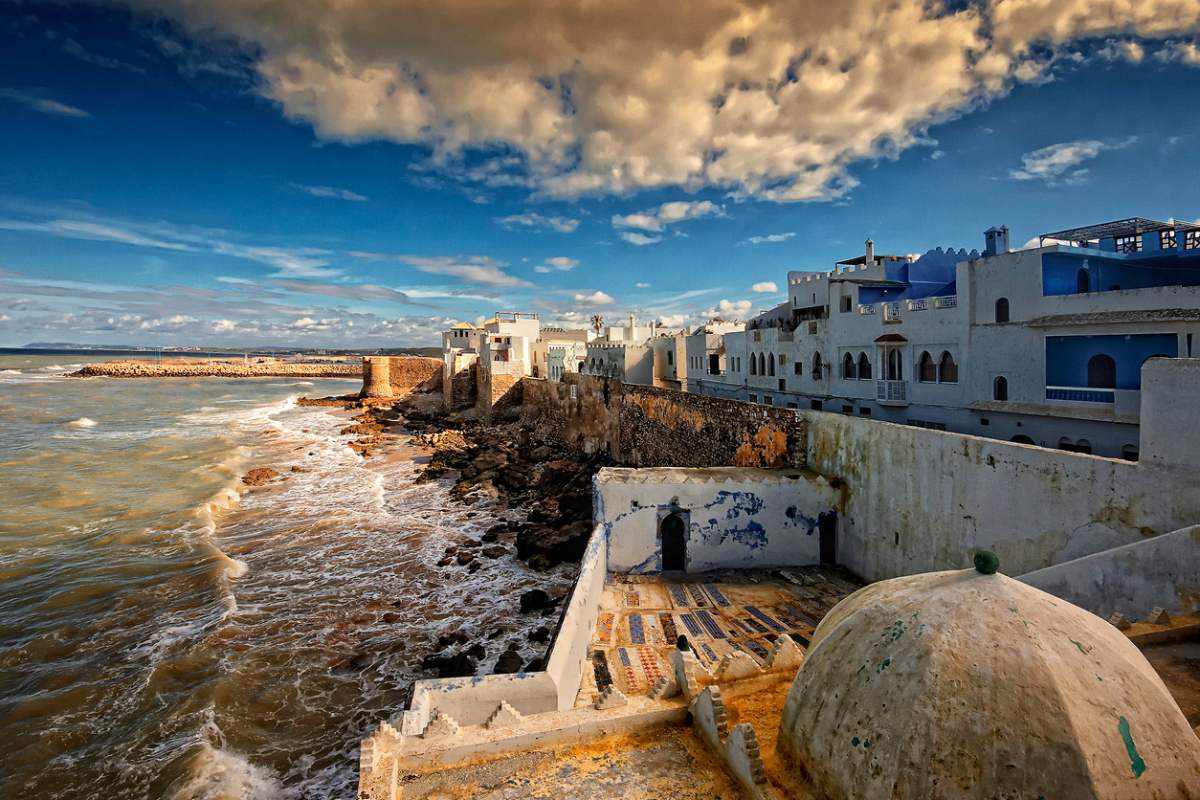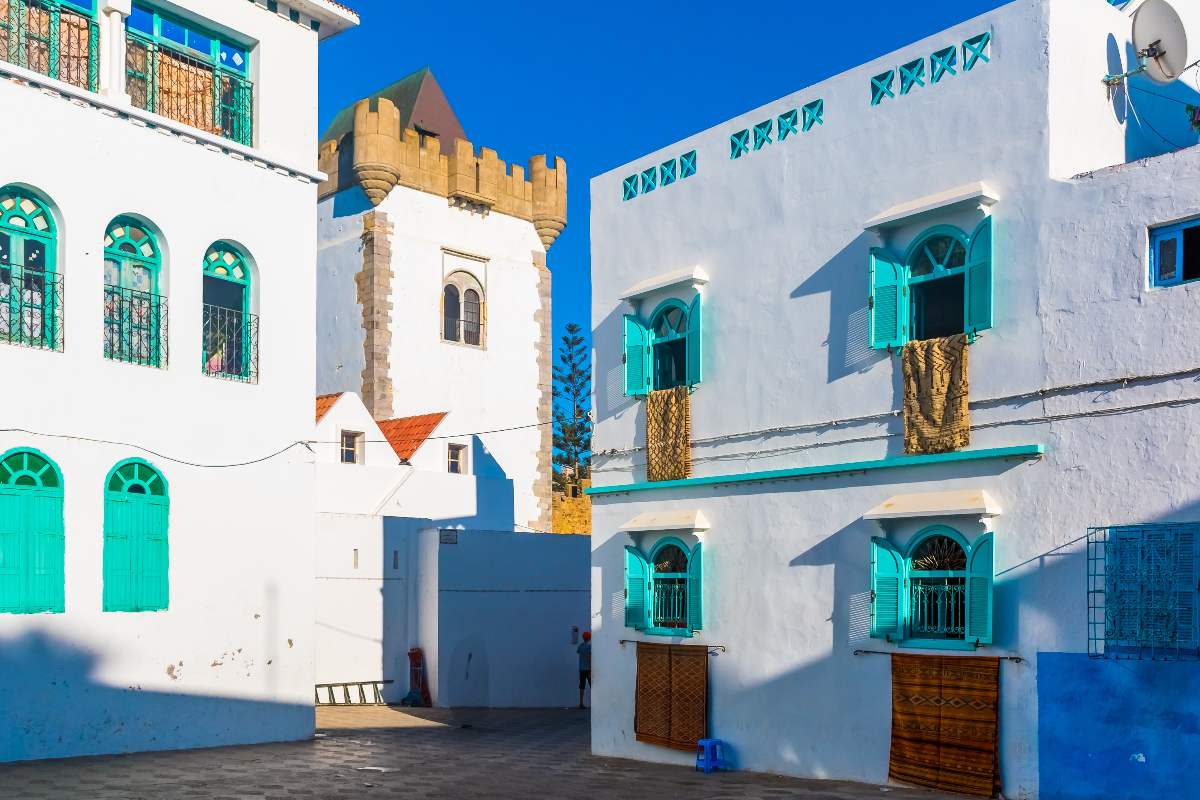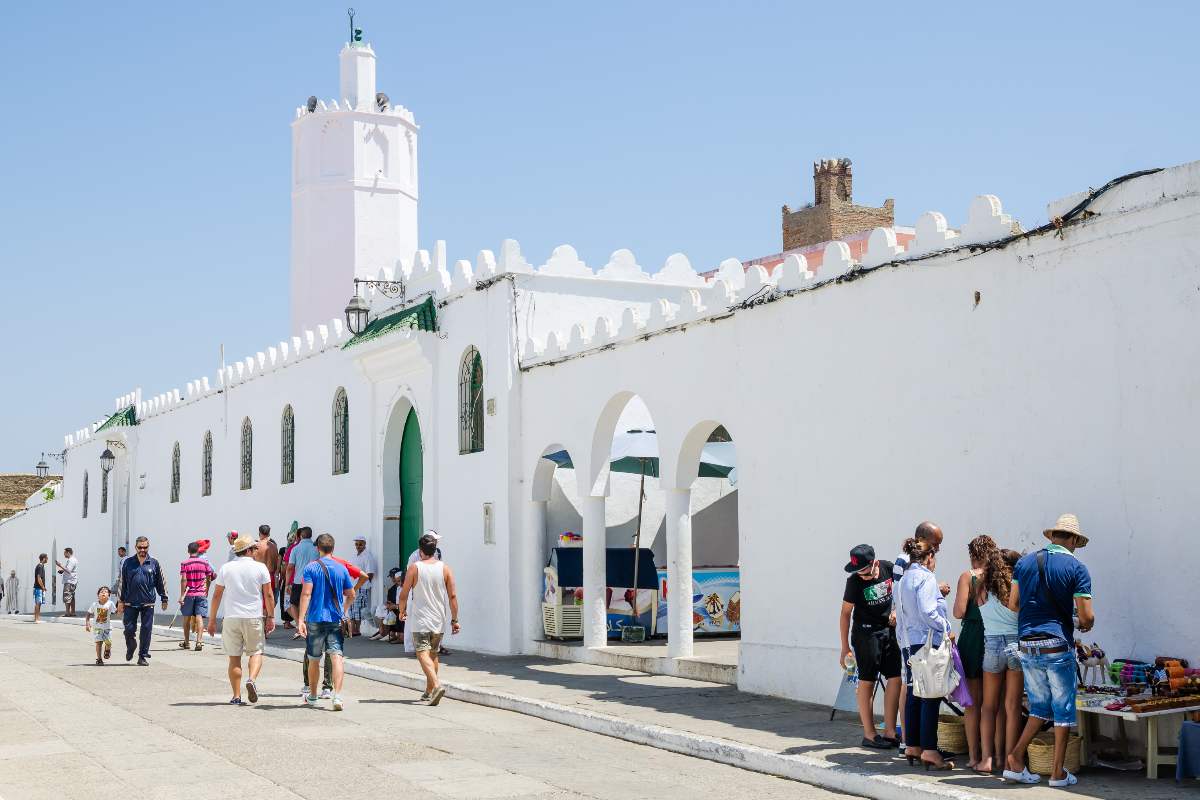Asilah, also often called Arcila, is one of the most beautiful tourist destinations in all of northern Morocco, and offers some attractions that you will hardly find in other corners of the country. Or, at least, with the same level of quality and originality. In this page we give you some interesting information so that you can take note of all the things that await you in this peaceful town on the Atlantic coast.
Asilah is a small city of less than 50,000 inhabitants and is part of the Tangier-Tetouan-Al Hoceima region. It is located in the northern part of the country and is bathed by the Atlantic Ocean, a key element in the configuration of its urbanism and culture.
Its climate is similar to that of other surrounding cities: warm during most of the year, cooled by the cold Atlantic currents and the sea breezes that come with them. This is a factor to take into account for those who travel to Asilah with the idea of taking a bath, as it may be somewhat uncomfortable for those who are not used to it, but nevertheless it will be a blessing for lovers of kitesurfing and water sports that need to see for their practice.
This is the relation of distances that separate Asilah from other tourist destinations in the north of Morocco and the rest of the country:
As far as transportation is concerned, to get to Asilah you will have to travel by road, mainly by private vehicle: there are few bus lines operating here and there is no train station, since the railroad line connecting Tangier with Kenitra runs a few kilometers inland. The city is well connected to the rest of northern Morocco via the A5 highway.
On the other hand, the closest airport to Asilah is Tangier (Tangier-Ibn Battuta), which is located about 40 km from Asilah, so it can be a great option for those who wish to travel directly to this tourist destination.

Given its relative proximity to the European continent and its strategic position in the northern part of the Atlantic coast, the history of Asilah is very rich and varied, as it was the object of desire of different powers throughout the centuries.
Those who first settled here were probably the Phoenicians, who founded a commercial settlement called Zilil. Their heirs were taken over by the Carthaginians and, above all, by the Romans in the time of Emperor Augustus, within a network of coastal and commercial towns in the province of Mauritania Tingitana, which also included Lixus (Larache), Tingis (Tangier) and even Sala (Rabat).
After the Arab conquest in 712, a new period of Muslim domination began, but not without conflicts and disputes. In that century and the next, Asilah was a small town rebuilt by the Idrisid dynasty, sometimes harassed by the Norman invaders. In the middle of the 10th century it was conquered and rebuilt by the Umayyad Caliphate of Al-Hakam II, although after the fall of this political entity with its capital in Cordoba (from the 11th century) it fell into the hands of the successive Almoravid, Almohad and Marinid empires.
In the middle of the 15th century came the conquests of the Europeans, who until then had limited themselves to commercial contacts (Genoa, Pisa, Venice, Marseilles, Barcelona). In 1471, the Portuguese took it and fortified it with the wall that can still be admired today, around the medina. Its strategic military importance can be understood by knowing that in 1578 King Sebastian I disembarked here accompanied by about 15,000 soldiers, on his way to what would later be his death: the battle of the Three Kings, in Alcazarquivir, in his attempt to conquer the north of Morocco.
After a very brief Spanish domination following the integration of Portugal into Spain in 1580, it was conquered by the Saadis at the end of that century. And after another brief recovery by the Spaniards in the following century, it was taken again (and definitively) by the Alaouite Sultan Moulay Ismail in 1691. During this period, an important reconstruction of the medina’s hamlet began, and this is what has largely survived to the present day.
Since then it has served as a refuge for pirates, which is why it was bombed by the Austrians in the 19th century. The Spanish Navy did the same in the framework of the Moroccan War in 1860. At the beginning of the 20th century, the regime of terror that the self-proclaimed Pasha El Raisuni dispensed for a few years was famous, but in 1912 Asilah was integrated into the Spanish Protectorate of Morocco.
Therefore, the Spanish influence can be seen in some aspects of daily life in Asilah, such as gastronomy. After the country’s independence in 1956, Asilah did not experience such unbridled growth as other Moroccan cities, and conceived tourism and culture as pillars of its activity, especially since the 1970s, when it began to be visited or inhabited by foreign artists and other Western citizens. As a result, a large festival is held every year in the summer.

It is enough to see some photos of Asilah to realize that it is worth integrating this destination in your Morocco tour. And if you take note of these other reasons, you will have no doubt that, by traveling here, you will be making the right decision:

Being a small city, the points of interest are very close to each other, so you can move around on foot, in a pleasant stroll through the medina:
Outside the medina and its fortified enclosure it is also possible to find other points of interest for the traveler, either in the new city developed during the Spanish Protectorate or in the surroundings of Asilah:
Asilah, with its bohemian and artistic aura, is a hidden gem along the Moroccan coast. Although small, this town dazzles with its unpretentious charm, which does not mean it lacks quality options. In fact, this is where the traditional blends with comfort, and where the artistic spirit of the city is reflected in its accommodations.
If you are looking for a genuine yet comfortable experience in Asilah, we recommend these riads:
Riad Asilah: Proximity to the sea, Moroccan charm and modernity merge in this cozy riad.
Hotel Al Alba: A hotel that stands out for its combination of traditional and contemporary architecture, guaranteeing a relaxing stay.
Dar Manara: In the heart of the medina, it offers an authentic experience with rooms that evoke Moroccan tradition without sacrificing comfort.
However, if you are looking for luxury at its finest, neighboring Tangier awaits you with a range of premium and sophisticated hotels. However, if you prefer to delegate the task of organizing your trip and are looking for a personalized experience in Asilah, Chic Morocco is at your service. Specialists in creating tailor-made trips, we guarantee you a unique experience in this picturesque city and beyond.







